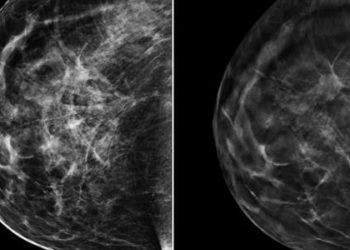2 Minute Medicine Rewind March 14, 2022
1. The small change approach was not a more effective strategy than monitoring alone for preventing weight gain in a group of sedentary overweight or obese adults
Evidence Rating Level: 1 (Excellent)
Currently, more than 63% of Canadian adults are overweight or obese. Being overweight or obese is a contributor of many chronic diseases, presenting a major public health concern. Results from randomized controlled trials show that most adults are unable to make and/or sustain lifestyle changes that are advantageous, perhaps even necessary, for weight loss long-term. Consequently, a more realistic goal may be to focus on actions that prevent further weight gain. Two pilot studies found that a small change approach (SCA), defined as an increase in daily step count of 2000 steps or a decrease in energy intake of 100 kcal, prevented weight gain in a small group of overweight children and adults over a period of 13 weeks. This randomized controlled trial aimed to determine the effectiveness of the SCA to prevent weight gain in overweight (body mass index (BMI) 25-29.9) and obese (BMI of ≥30) adults at 2 and 3 years. A total of 320 sedentary adults in overweight or obese categories were randomly assigned to monitoring alone (MA, n = 160) or a small change approach (SCA, n = 160). In phase 1 (2 years), participants in the MA group were asked to maintain their normal lifestyle while those in the SCA group were instructed on making small changes in diet (reducing consumption by 100 kcal) and physical activity levels (increasing daily step count by 2000 steps). Phase II (1 year) was a passive follow-up period. The primary outcome measure was difference in change in body weight between groups at 24 and 36 months from baseline. Secondary outcomes included waist circumference and cardiorespiratory fitness. Overall, 268 participants (83.8%) completed the 2-year intervention and 239 (74.7%) completed the 3-year follow up. The difference in body weight change between the MA and SCA groups was significant at 3, 6, 12, and 15 months from baseline, but not at 24 months s (mean change 0.9 [standard error (SE) 0.5] kg v. –0.4 [SE 0.5] kg; difference –0.6, 95% confidence interval [CI] –1.9 to 0.8) or 36 months (–1.2 [SE 0.8] v. –0.7 [SE 0.8] kg; difference –0.5, 95% CI –2.2 to 1.2). Changes in waist circumference and cardiorespiratory fitness were not statistically significant at 24 or 36 months (both p >0.1). This study concluded that SCA did not prevent weight gain compared with monitoring alone at 2 or 3 years in adults who are overweight or obese.
1. Methenamine hippurate was non-inferior to antibiotic prophylaxis as treatment in women with a history of recurrent UTIs
Evidence Rating Level: 1 (Excellent)
Acute urinary tract infection (UTI) occurs in 50-80% of women in the general population and approximately one in four women with one UTI episode will go on to develop frequent recurrences, defined as repeated UTI with a frequency of at least two episodes in the preceding six months or three episodes in the past year. Recurrent UTIs present a substantial global healthcare and economic problem and, in the face of a rapid rise in antimicrobial resistance, there is an urgent need for effective non-antibiotic treatments. Methenamine hippurate is one such non-antibiotic treatment. This randomized controlled trial aimed to determine whether methenamine hippurate is an effective alternative to the standard treatment of low dose antibiotics for prophylaxis in women with recurrent UTIs in a routine clinical setting. A total of 240 women aged ≥18 years with recurrent UTIs requiring prophylactic treatment were randomly assigned to receive antibiotic prophylaxis (n=120) or methenamine hippurate (n=120) for 12 months. Treatment allocation was not masked and crossover between arms was allowed. The primary outcome measure was absolute difference in incidence of symptomatic, antibiotic treated, urinary tract infections during treatment. The non-inferiority margin was predefined as one episode of UTI per person year. The incidence of UTIs during the 12 month treatment period was 0.89 episodes per person year (95% CI 0.65 to 1.12) in the antibiotic prophylaxis group versus 1.38 episodes per person year (95% CI 1.05 to 1.72) in the methenamine hippurate group, with an absolute difference of 0.49 (90% CI 0.15 to 0.84) confirming non-inferiority. Adverse reactions were reported by 34/142 (24%) in the antibiotic group and 35/127 (28%) in the methenamine hippurate group. The authors concluded that methenamine hippurate was non-inferior to antibiotic prophylaxis as treatment in women with recurrent UTIs and, hence, may be an appropriate non-antibiotic management option in this population.
1. Icosapent ethyl substantially reduced the risk of recurrent cardiovascular events versus placebo in patients with a history of prior percutaneous coronary intervention
Evidence Rating Level: 1 (Excellent)
Patients who undergo percutaneous coronary intervention (PCI) are at higher risk of subsequent cardiovascular events compared with patients with other cardiovascular histories. The Reduction of Cardiovascular Events With Icosapent Ethyl-Intervention Trial (REDUCE-IT) aimed to test the effectiveness of icosapent ethyl 4g/day versus placebo among patients with established cardiovascular disease or diabetes and additional risk factors. The trial found a significant reduction in first and total major adverse cardiovascular events (MACE) among patients who were treated with icosapent ethyl. Using REDUCE-IT data, this present analysis aimed to study the effects of icosapent ethyl versus placebo among patients who have been treated previously with PCI. REDUCE-IT was a multicenter, randomized, double-blind, placebo-controlled trial. Patients were randomly assigned to receive either icosapent ethyl or placebo. The primary end point was a composite of cardiovascular death, nonfatal myocardial infarction, nonfatal stroke, coronary revascularization, or unstable angina requiring hospitalization. Of 8179 patients, 3408 (41.7%) had a prior PCI with a median follow up of 4.8 years. There was a 34% reduction in the primary composite end point (hazard ratio [HR], 0.66; 95% CI, 0.58- 0.76; P<0.001; number needed to treat4.8 years=12) among patients treated with icosapent ethyl versus placebo. There was also a 39% reduction in total events (rate ratio, 0.61; 95% CI, 0.52-0.72; P<0.001). The authors concluded that among patients with a history of prior PCI, icosapent ethyl substantially reduced the risk of recurrent cardiovascular events when compared with placebo.
1. The addition of HIPEC to cytoreductive surgery did not improve progression-free and overall survival in patients with advanced ovarian cancer
Evidence Rating Level: 1 (Excellent)
Ovarian cancer has the highest mortality rate among gynecologic malignant tumors. The standard treatment involves maximal cytoreductive surgery followed by adjuvant chemotherapy to minimize residual tumor size. Neoadjuvant chemotherapy can also be used in select populations. Although intraperitoneal chemotherapy increases progression-free and overall survival among patients with ovarian cancer, port-related adverse effects have limited its use. Hyperthermic intraperitoneal chemotherapy (HIPEC) involves intraperitoneal chemotherapy but not does require a post-operative intraperitoneal port. The results of a clinical trial (Interval Debulking Surgery +/- Hyperthermic Intraperitoneal Chemotherapy in Stage III Ovarian Cancer) demonstrated the clinical benefit of HIPEC after interval cytoreductive surgery subsequent to neoadjuvant chemotherapy in ovarian cancer patients. This single-blind randomized controlled trial aims to assess the clinical benefit of HIPEC after primary or interval maximal cytoreductive surgery in women with Stage III or IV primary advanced ovarian cancer. A total of 184 patients with Stage III or IV ovarian cancer with residual tumor size less than 1 cm were randomized to a HIPEC (n=92) or control (n=92) group. The primary end point was progression-free survival. Overall survival was a secondary end point. After a median follow-up of 69.4 months (IQR, 54.4-86.3 months), median progression-free survival was 18.8 months (IQR, 13.0-43.2 months) in the control group and 19.8 months (IQR, 13.7-55.4 months) in the HIPEC group (P = .43). Median overall survival was 61.3 months (IQR, 34.3 months to not reported) in the control group and 69.5 months (IQR, 45.6 months to not reported) in the HIPEC group (P = .52). The authors concluded that the addition of HIPEC to cytoreductive surgery did not improve progression-free and overall survival in patients with advanced ovarian cancer. Further investigation is necessary.
1. Baseline ERP, time-varying ERP, new-onset ERP, and consistent ERP were independent predictors of cardiovascular death and sudden cardiac death in middle-aged adults
Evidence Rating Level: 2 (Good)
Early repolarization pattern (ERP), characterized by a J wave on a standard 12-lead ECG relative to the T-P baseline, has been associated with an increased risk of ventricular fibrillation (VF) and sudden cardiac death (SCD). ERP is a modifiable factor that may change over time in response to clinical conditions and medical treatment. However, the association of changes in ERP over time with the risk of cardiovascular death has not been assessed in population studies. Consequently, the aim of this cohort study is to prospectively examine this relationship. A total of 14,679 middle-aged participants were included. The ERP status was recorded at baseline and during 3 follow-up visits. Baseline ERP, time-varying ERP, and temporal changes in ERP were related to cardiovascular outcomes. With a median follow-up of 22.5 years, there were 5033 deaths, 1239 cardiovascular death, and 571 SCDs. Baseline ERP was found to be associated with all 3 outcomes. Furthermore, time-varying ERP was associated with increased risk of all-cause death (HR, 1.16 [95% CI, 1.05–1.27]), cardiovascular death (HR, 1.70 [95% CI, 1.44–2.00]), and SCD (HR, 1.59 [95% CI, 1.25–2.02]). Compared with those with consistently normal ECG findings, subjects with new-onset ERP or consistent ERP experienced increased risks of developing cardiovascular death and SCD. This study concluded that baseline ERP, time-varying ERP, new-onset ERP, and consistent ERP were independent predictors of cardiovascular death and SCD in middle-aged adults. Repeated measurements of ERP may be a useful indicator of SCD.
Image: PD
©2022 2 Minute Medicine, Inc. All rights reserved. No works may be reproduced without expressed written consent from 2 Minute Medicine, Inc. Inquire about licensing here. No article should be construed as medical advice and is not intended as such by the authors or by 2 Minute Medicine, Inc.







